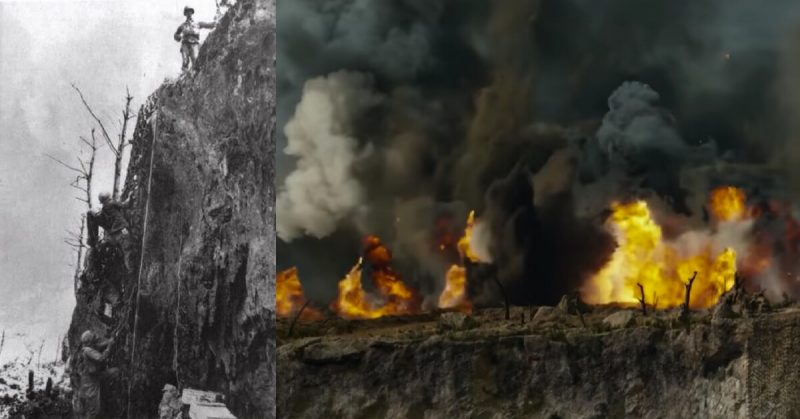To tell the authentic story of Desmond Doss, the conscientious objector awarded the Medal of Honour for rescuing 75 soldiers during the Battle of Okinawa, director Mel Gibson used Hollywood wizardry to create Hacksaw Ridge that gained infamy as a killing ground.
Desmond Doss, a Seventh-Day Adventist who refused to carry a weapon, faced persecution from fellow soldiers during basic training, certain that his adherence to his principles made him a liability. Nevertheless, at Hacksaw Ridge, Desmond Doss went back into the combat zone repeatedly, carrying soldiers to the ridge’s lip and lowering them down 400 feet.
Production designer Barry Robinson, avoiding modeling and computer-fashioned effects, found the perfect ridge in the small Australian town of Goulburn which seemed ideal but was discounted since the scene had to be on the mock battlefield fabricated on a dairy farm east of Sydney. So the crew set to work replicating the ridge based on molds of the cliff face, digging a trench sixty feet wide and thirty feet deep and making a facade over it.
Robinson explained the fake battlefield occupied five to six acres. Scenic Australian countryside became invisible due to the entire acreage being carved in the shape of a bowl.
The most significant characteristic was the set’s plasticity. If Mel Gibson had a requirement, they were able to manufacture a totally different looking battlefield simply by transferring dirt from one spot to another, erecting new burned trees, and rearranging rocks.
Battlefield realism was added using equipment to generate fog and smoke, fuel lines for detonations, false damaged buildings, augmented with sets in studios for other scenes such as when Doss is trying to flee the tunnels without being seen by Japanese soldiers.
Robinson conducted substantial research to recreate the battleground by visiting the New Orleans’ National World War Two Museum but it wasn’t sufficient to give a ground view nor were various battlefield maps which failed to give topographical information. Similarly, aerial photographs fell short because they showed craters and little else.
The movie does well at portraying the horror, chaos, and claustrophobia of battle.
What is seen in the movie is a cross between the genuine world and one manufactured by artists.
https://www.youtube.com/watch?v=tEjh7-thFok
